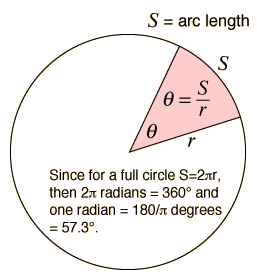
1. An Olympic diver dives off the high-diving platform. The magnitude of his momentum will be a maximum at Point
(A)A
(B)B
(C)C
(D) D
2. Which of the following can best be described as an elastic collision?
(A) A falling tree hitting the earth.
(B) A linebacker stopping a fullback.
(C) A golf club striking a golf ball.
(D) A pie in the face.
3. The Center of Mass of which of the following objects would not lie within the body itself?
(A) baseball
(B) brick
(C) frisbee
(D) paperback book

4. What is the magnitude of the impulse as shown in the following figure?
(A)100 Ns
(B)900 Ns
(C)1000 Ns
(D)1100 Ns

5. If the impulse is applied to a particle at rest, what will be its final momentum?
(A)100 kg m/s
(B)900 kg m/s
(C)1000 kg m/s
(D)1100 kg m/s

6. What is the impulse shown in the following figure?
(A)225 Ns
(B)450 Ns
(C)900 Ns
(D) 1000 Ns

7. If the impulse is applied to a 200 gm model rocket at rest, what will be its final speed?
(A) 2.25 m/s
(B) 22.5 m/s
(C) 2250 m/s
(D) 4500 m/s
8. What constant force acting over the same time as the force in Question 6 would produce the same impulse?
(A)45 N
(B) 50 N
(C) 90 N
(D)100 N
9. If each mass in the figure is 1 kg, what is the x location of the center of mass?
(A) .5
(B) .67
(C)1.0
(D) 1.33

10. If each mass in the figure is 1 kg, what is the y location of the center of mass?
(A) .33
(B) .5
(C) .67
(D) .85

11. If the mass of m1 and m3 in the figure is 1 kg and m2 is 2 kg, what is the x location of the center of mass?
(A) 1.33
(B) 1.0
(C) .67
(D) .33

12. If the mass of m1 and m3 in the figure is 1 kg and m2 is 2 kg, what is the y location of the center of mass?
(A) .75
(B) .5
(C) .33
(D) .25

13. If the mass of m1 is 1 kg and m3 is 2 kg in the figure and m2 is 3 kg, what is the x location of the center of mass?
(A) .67
(B) 1.17
(C) 1.33
(D) 1.67

14. If the mass of m1 is 1 kg and m3 is 2 kg in the figure and m2 is 3 kg, what is the y location of the center of mass?
(A).25
(B).5
(C) .67
(D) .75
15. If all the masses in the figure have a mass of 2 kg, and m2 has speed 2 m/s and m3 has a speed of 4 m/s, what is the x-component of the momentum of the center of mass?
(A)2 kg m/s
(B)4 kg m/s
(C)6 kg m/s
(D)10 kg m/s

16. If all the masses in the figure have a mass of 2 kg, and m2 has speed 2 m/s and m3 has a speed of 4 m/s, what is the y-component of the momentum of the center of mass?
(A)2 kg m/s
(B) 4 kg m/s
(C) 8 kg m/s
(D) 10 kg m/s

17. What is the magnitude of the momentum of the center of mass of the system of particles in Question 15?
(A) 4kg m/s
(B) 8 kg m/s
(C) 8.9 kg m/s
(D)10 kg m/s
18. What is the direction of the momentum of the center of mass of the particles in Question 15, as measured in degrees counter clockwise from East?
(A) 15
(B) 34
(C) 45
(D) 63
19. A 12000 kg railroad car travelling at 10 m/s strikes and couples with a 6000 kg caboose at rest. What is the speed of the final combination?
(A) 3.3 m/s
(B)5.0 m/s
(C)6.7 m/s
(D)10 m/s
20. A 12000 kg railroad car travelling at 10 m/s strikes and couples with a 6000 kg caboose at rest. What is the loss of mechanical energy in the collision?
(A) 50000 J
(B) 100000 J
(C) 200000 J
(D) 250000 J
21. A 12000 kg railroad car travelling at 10 m/s strikes and couples with a 6000 kg caboose at rest. What would be the speed of the combination of railroad cars if the caboose was initially rolling towards the other car with a speed of 2 m/s?
(A) 0 m/s
(B) 6.0 m/s
(C) 7.3 m/s
(C) 12 m/s
22. A billiard ball travelling to the right at 6m/s overtakes and strikes an identical ball travelling at 3 m/s. What is the speed of the first ball after the collision?
(A) -6 m/s
(B) -3 m/s
(C) 3 m/s
(D) 6 m/s
23. A billiard ball travelling to the right at 6m/s overtakes and strikes an identical ball travelling at 3 m/s. What is the speed of the second ball after the collision?
(A)-6 m/s
(B) -3 m/s
(C) 3 m/s
(D) 6 m/s
24. A billiard ball travelling to the right at 6m/s overtakes and strikes an identical ball travelling at 3 m/s. What is the speed of the first ball after collision if the second ball was travelling at it (instead of away from it) with a speed of 3 m/s before collision?
(A) -6 m/s
(B) -3 m/s
(C) 3 m/s
(D) 6 m/s
25. What is the speed of the second ball in Question 24 after collision?
(A) -6 m/s
(B) -3 m/s
(C) 3 m/s
(D) 6 m/s























